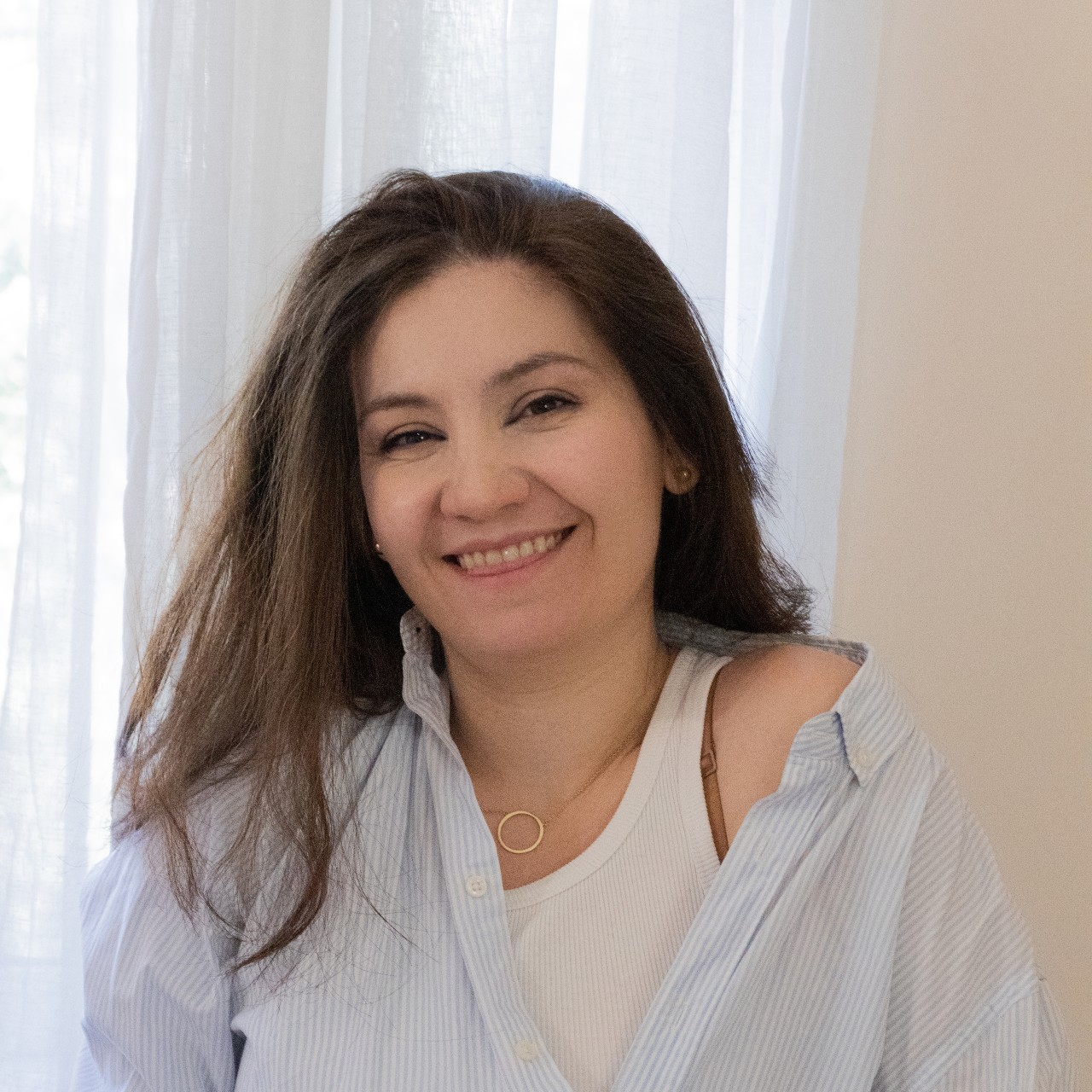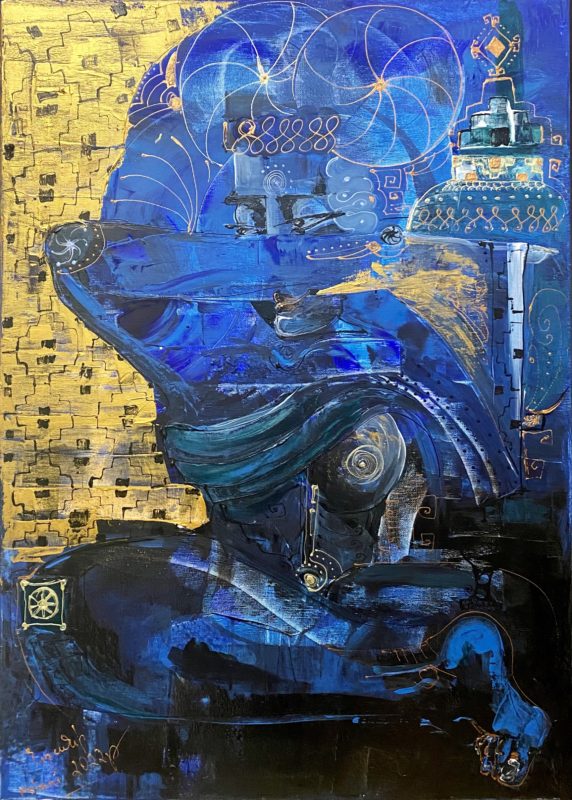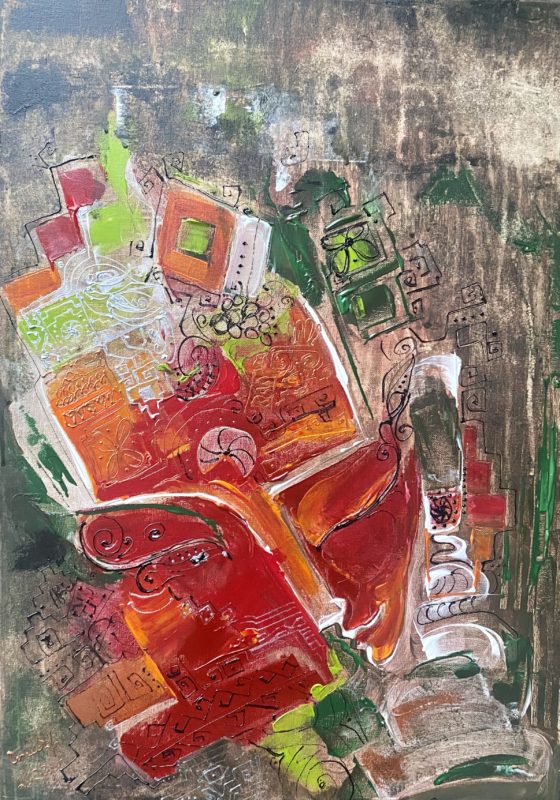Lilit Nshani is an emerging Armenian artist and founder of the art movement for which the French art historian Patrick Quenum coined the term “Oriental Neo-Symbolism.” During our conversation, we explored the cultural inspirations behind her artwork, her journey from marketing to painting, the significance of networking, and the complexities of shipping art.
Artist Talk: Lilit Nshani and Her Oriental Neo-Symbolism
Let's start by discussing your background. Although you dabbled in art as a teenager, you didn't begin your artist career until later in life. Can you share more about your journey to becoming an artist?
Lilit Nshani: I have always felt like an artist and have been fascinated by all things creative. However, when it came time for me to choose a university and future profession in the early 2000s, the art market in Armenia was almost non-existent. So my parents discouraged me from pursuing art as a career and instead urged me to pursue a more pragmatic and stable profession to secure my future. Looking back, I realize they were right, and I am grateful for their guidance.
I eventually chose to enter business school and found a creative outlet in marketing, which allowed me to express my creativity without feeling guilty. Through this career, I gained valuable skills and experience that helped me mature as both a person and an artist. I believe that art requires emotional and personality maturity to create valuable and meaningful work, and I may not have been ready to do so in my twenties.
About five years ago, I felt the urge to revive my passion for art, and I started dedicating Sundays to painting. To my surprise, my art began gaining recognition from experts in Europe and Armenia, and that motivated me to become a full-time artist. I take my art and the opportunity to share my thoughts and experiences with others with a great sense of responsibility.
Art critics describe your art as Oriental Neo-Symbolism. Can you explain the cultural background of your art; the symbols and references that you use?
In 2020, I experienced a profound crisis due to a military conflict in my country. This raised a lot of questions within me as to how the lost fragments of heritage and uncovered hidden symbols could impact the current situation. I dived into the research, and as an artist, I inevitably incorporated my findings into my work. Art is a form of visual thinking, after all. As I searched for my identity and roots, I created artwork that was infused with ancient symbols. While I have always admired the aesthetic of European 19th-century symbolist art, it often delves into the darker aspects of human nature. This is something I want to avoid in my work. I feel a sense of responsibility to imbue my art with positive emotions since it stays with the viewer long after the initial viewing. And so, oriental neo-symbolism was born – "Oriental" because it draws inspiration from ancient Armenian culture, and "Neo-Symbolism" because I developed my own semiotic system.
Armenia has been a Christian country for centuries, but it is also the heir to the ancient Urartu kingdom. Which cultural layer influences your art more?
As a religious person, I believe in God's existence. I think that God has always been there, no matter the name. In pagan times, even if there were several gods or names for the same deity, they were just different manifestations of the same universal power. This perspective allows me to see the connections between pre-Christianity and Christian heritage in Armenian culture. Christianity has been around for 2000 years, and we cannot deny the 5000 years of our history that came before it. To find balance, we must consider all these layers.
Your career as an artist has been progressing rapidly over the past five years, and it's not often that emerging artists can say they're represented by galleries. What is your approach to art as a business?
The biggest lesson I learned from my past life in marketing is the importance of networking and communication. Making connections and building relationships are crucial in the art market. I'm fortunate to have the ability to connect with people and this has been a major factor in my career development.
To enter the art market, I sought consultation from a French historian named Patrick Quenum, who fell in love with my art and promoted me as an art expert. Through him, I met many people and approached galleries, some of which immediately showed interest in my work. This led to exhibitions in Athens and Italy, and I am now represented by galleries in the UK and Italy. My first solo exhibition, which took place in November 2022 at the Artists Union of Armenia in Yerevan, received good reviews from art critics. It was followed by an award-winning art residency in Italy and a successful virtual solo show. I'm excited to move forward with more projects.
Since you work with galleries in Europe, I assume you have to transport your artwork back and forth. How do you select a shipping company, and what factors are important to consider when shipping art?
Shipping my artwork has been a challenge, especially during the pandemic when I couldn't travel to the exhibition or gallery in person. When I travel with my artwork, there are no issues, but when it comes to shipping, it becomes more complicated. Unfortunately, the art structures in my country are not well-developed, so personal connections become crucial.
Recently, I had to ship my artwork to a museum in Italy, and I faced many limitations and hidden costs when trying to do so. I tried to send it with a friend, but eventually, I chose to work with a regular shipping company. However, they only take responsibility for shipping, and not for customs clearance or insurance. As an individual, it's hard to get insurance for artwork, as insurance companies prefer to work with galleries. It was then that I realized the need to work with a specialized shipping company that could handle all the complex issues involved in shipping artwork. This is especially crucial for me now that I'm building relationships with the US market.
Photo courtesy of Lilit Nshani


